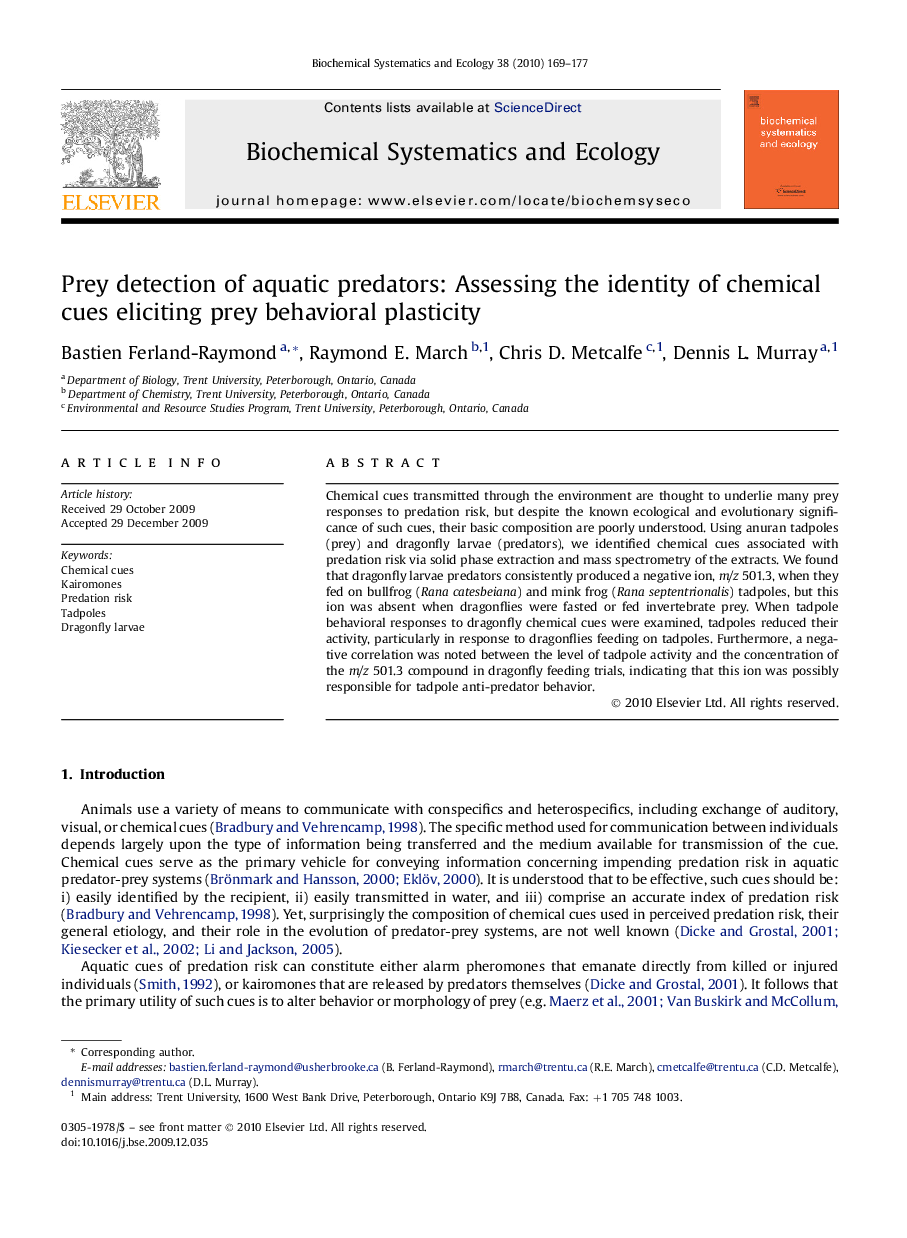| کد مقاله | کد نشریه | سال انتشار | مقاله انگلیسی | نسخه تمام متن |
|---|---|---|---|---|
| 1354512 | 980743 | 2010 | 9 صفحه PDF | دانلود رایگان |

Chemical cues transmitted through the environment are thought to underlie many prey responses to predation risk, but despite the known ecological and evolutionary significance of such cues, their basic composition are poorly understood. Using anuran tadpoles (prey) and dragonfly larvae (predators), we identified chemical cues associated with predation risk via solid phase extraction and mass spectrometry of the extracts. We found that dragonfly larvae predators consistently produced a negative ion, m/z 501.3, when they fed on bullfrog (Rana catesbeiana) and mink frog (Rana septentrionalis) tadpoles, but this ion was absent when dragonflies were fasted or fed invertebrate prey. When tadpole behavioral responses to dragonfly chemical cues were examined, tadpoles reduced their activity, particularly in response to dragonflies feeding on tadpoles. Furthermore, a negative correlation was noted between the level of tadpole activity and the concentration of the m/z 501.3 compound in dragonfly feeding trials, indicating that this ion was possibly responsible for tadpole anti-predator behavior.
Journal: Biochemical Systematics and Ecology - Volume 38, Issue 2, April 2010, Pages 169–177